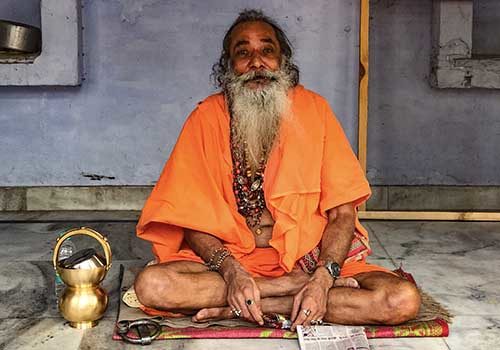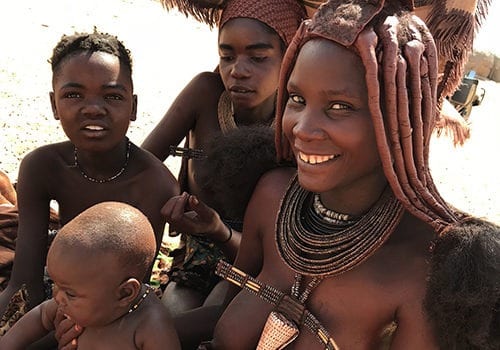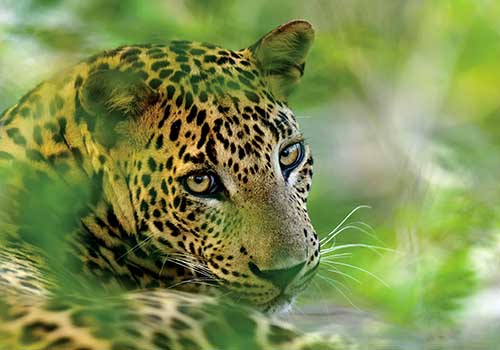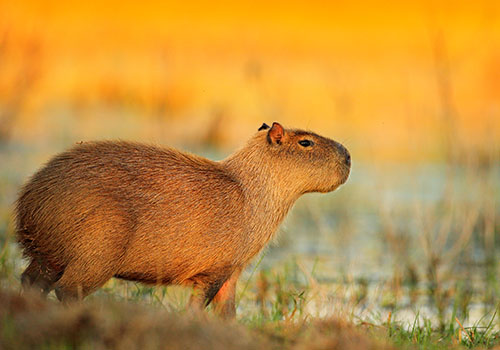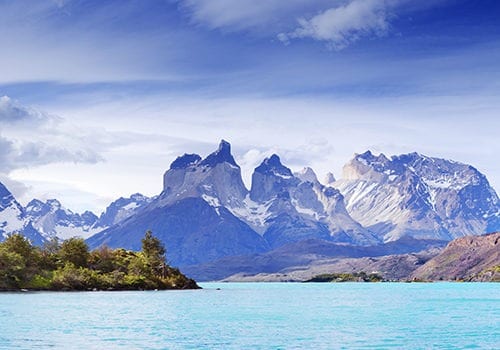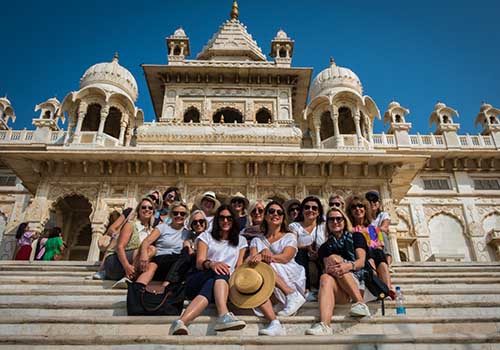
KEY INFORMATION TO PREPARE FOR YOUR JOURNEY
Nestled in the crystal-clear waters of the Indian Ocean, Madagascar is a one of a kind island paradise off the African coast. This surprising destination beckons with its enchanting natural wonders, from the mystical Avenue of the Baobabs to the otherworldly Tsingy de Bemaraha. But the real magic lies in its vibrant biodiversity, with curious lemurs swinging through lush national parks. As you explore pristine beaches and coral reefs, don’t miss the chance to savour the local culture and tantalise your taste buds with Madagascar’s unique cuisine. It’s a truly captivating and unforgettable adventure for those seeking the extraordinary.
This information will assist in preparing for your departure and includes helpful travel hints for when you are there. For detailed pre-departure information for Africa on the whole please refer to our AFRICA pre-departure information.
PLEASE NOTE: All pre-departure information was correct at the time of writing, but should be used as a guide only since requirements can change at short notice and without warning. Consult Smart Traveller or contact the Embassy of Madagascar or the appropriate authority prior to departure to confirm all details.
AT A GLANCE
MADAGASCAR KEY FACTS
Time: GMT +3 hours | AEST -7 hours
Capital: Antananarivo
International Airport(s): Antananarivo – Ivato International Airport (TNR) & Nosy Be (NOS)
Official languages: Malagasy & French. English was added as an official language in 2007 and is slowly becoming more widely spoken
Religion: 52% of the population adheres to traditional beliefs, 41% are Christians, and the remaining 7% of Malagasies are Muslim
Electrical Current: 220V | European 2 round pin – Types C and E
Currency: Malagasy Ariary l (MGA)
Australian Consulate in Antananarivo: Building C1 (AMCHAM Office), Explorer Business Park Ankorondrano, Antananarivo | T: (+261) 32 05 596 01 or (+261) 34 10 863 41 | E: aust.consulate.madagascar@gmail.com
Visa: Australian & New Zealand passport holders do not require a visa for stays of up to 14 days. Visas can be obtained on arrival for stays between 15 to 60 days – refer to ‘Passport and Visa Requirements‘ for further details.
USEFUL WEBSITES
Smart Traveller – https://www.smartraveller.gov.au/destinations/africa/madagascar
Travel Doctor-TMVC – https://www.traveldoctor.com.au/destinations/madagascar
PUBLIC HOLIDAYS
January 1: New Year’s Day
March 8: Women’s Day
March 29: Martyr’s Day
Monday after Easter: Easter Monday
End of Ramadan: Eid al-Fitr*
May 1: Labour Day
Feast of the Sacrifice: Eid al-Adha*
40 days after Easter: Ascension Day
50 days after Easter: Whit Monday
June 26: Independence Day
August 15: Assumption Day
November 1: All Saints Day
December 25: Christmas Day
*As both of these holidays are based on the Islamic lunar calendar the precise date is determined by the moons cycle.

PASSPORT & VISA REQUIREMENTS
PASSPORTS
For information relating to the specific countries you are visiting please refer to the country specific information pages which are found at the end of this booklet. This page contains important information that applies generally to all countries in Africa.
Your passport must be valid for at least six months after your return to Australia and have at least two blank pages for every entry and country you intend to visit on your journey. If your passport does not meet these requirements you must obtain a new one. The Australian Passport Office website is www.passports.gov.au.
It is a wise precaution to carry a photocopy of your passport separately and leave a copy at home. This will aid authorities in processing a new passport should yours get stolen or lost.
If you have dual citizenship and more than one passport, we strongly recommend that you use only one of these during your travels, as in some countries it is considered illegal to have two or more passports. Be sure to use the same passport on entry and exit from a country, and never surrender your passport.
If your passport name is different to your commonly used name, advise us of this and ensure your airline reservations match those of your passport name.
VISAS
Australian and New Zealand passport holders do not require a Visa to enter Madagascar for stays of up to 14 days. A Visa is required for stays between 15 – 60 days and can be obtained on arrival.
If a visa is required it is possible to apply for your visa beforehand online, however, we have been advised that this system is currently unreliable so we recommend purchasing your visa on arrival.
STAYS UP TO 14 DAYS
A Madagascar Visa is not required for stays of up to 14 days in the country, however an administration fee of US$11/EUR10 is charged on entry.
STAYS BETWEEN 15 – 30 DAYS
A Madagascar Visa obtained on arrival for a fee of 115,000 Ariary (approx US$37/EUR35) for stays between 15 to 30 days.
STAYS BETWEEN 31 – 60 DAYS
A Madagascar Visa obtained on arrival for a fee of 135,000 Ariary (approx US$45/EUR40) for a stays of 31 to 60 days.
All payments must be paid in CASH at the airport and the cost does change so please have more than enough cash on hand.

AIR ARRANGEMENTS
PASSPORT NAME
Your airline reservation must be made in your legal name as it appears on your passport (i.e. names on tickets and passports must match). If your passport name is different to your commonly used name, advise us of this and ensure your airline reservation name matches those on your passport.
SPECIAL REQUESTS
Do let us know your seat preferences and any special requests so we can advise the airlines accordingly, however airlines do not guarantee seat preferences and some airlines now charge extra for this service.
Be sure to mention any other special requests you may have such as dietary requirements, kids meals and wheelchair assistance.
FREQUENT FLYERS
Prior to your departure ensure you have provided your consultant with your frequent flyer details so they can be added to your flight booking.
If you intend to use frequent flyer miles for your air travel you must book your own flights directly with the airline. It is a good idea to hold onto all your boarding passes in the event you have a query regarding points on your return.
DIY FLIGHT ARRANGEMENTS
If your flights are not booked by us ensure you provide your consultant with a copy of your flight itinerary so that we can share this with our ground operators who are responsible for booking corresponding ground transfers.
CHARTER FLIGHTS
See ’Luggage & Packing’ for how charter plane restrictions may affect you.
CLIMATE, WEATHER & SEASONS
CLIMATE
Madagascar is the world’s fourth largest island with a coastline that stretches almost 5,000 kilometres (3,000 miles) around its edge.
Advising when to visit Madagascar is challenging due to the size of the island and its diversity. It also really comes down to what you want to see.
There are a few months to avoid, namely January through to March during Madagascar’s cyclone season. April still finds a few storms but on the main, this is the start of Madagascar’s dry season with plenty of lush green foliage. Visiting Mada in June and July is perfect for watching baby lemurs as well as humpback whales in the north, and birdwatchers will want to hang around until August and September to catch the abundance of endemic & migratory species. Madagascar’s iconic ring-tail lemurs are born in October and a visit to national parks in the south is recommended. Temperatures begin to soar during November & December with rains returning to Antananarivo, the central highlands, and the north of Madagascar.

| ANTANANARIVO | JAN | FEB | MAR | APR | MAY | JUN | JUL | AUG | SEP | OCT | NOV | DEC |
|---|---|---|---|---|---|---|---|---|---|---|---|---|
| Temperature (°C) | 17-28 | 17-28 | 16-27 | 15-26 | 12-25 | 10-22 | 9-21 | 9-23 | 10-25 | 13-27 | 15-28 | 16-28 |
| Rainfall (mm) | 270 | 255 | 185 | 50 | 20 | 7 | 10 | 15 | 10 | 65 | 170 | 305 |
| TOAMASINA | JAN | FEB | MAR | APR | MAY | JUN | JUL | AUG | SEP | OCT | NOV | DEC |
|---|---|---|---|---|---|---|---|---|---|---|---|---|
| Temperature (°C) | 23-31 | 23-31 | 22-312 | 21-30 | 20-29 | 18-27 | 17-26 | 17-26 | 17-27 | 19-28 | 20-29 | 22-31 |
| Rainfall (mm) | 410 | 380 | 480 | 325 | 230 | 260 | 290 | 220 | 120 | 135 | 170 | 355 |
| NOSY BE | JAN | FEB | MAR | APR | MAY | JUN | JUL | AUG | SEP | OCT | NOV | DEC |
|---|---|---|---|---|---|---|---|---|---|---|---|---|
| Temperature (°C) | 23-32 | 23-32 | 23-33 | 23-33 | 21-32 | 20-31 | 19-31 | 19-31 | 20-32 | 22-33 | 23-33 | 23-33 |
| Rainfall (mm) | 465 | 425 | 285 | 140 | 60 | 50 | 35 | 40 | 40 | 95 | 190 | 360 |
| MORONDAVA | JAN | FEB | MAR | APR | MAY | JUN | JUL | AUG | SEP | OCT | NOV | DEC |
|---|---|---|---|---|---|---|---|---|---|---|---|---|
| Temperature (°C) | 24-32 | 24-33 | 23-33 | 21-33 | 18-31 | 15-30 | 14-30 | 15-30 | 18-31 | 20-32 | 22-33 | 23-33 |
| Rainfall (mm) | 240 | 200 | 90 | 15 | 11 | 2 | 2 | 2 | 4 | 12 | 20 | 165 |
LUGGAGE & PACKING
LUGGAGE
Don’t take too much! You will regret bringing large unwieldy luggage and Madagascar does not require fancy attire. Most importantly please note that the trunk/boot of Malagasy vehicles can be relatively SMALL. So if you travel with a large, hard-shelled suitcase you may have a problem getting your luggage to fit. Wheelie bags with soft sides are ideal, along with a small backpack or shoulder bag for day-to-day items.
All luggage should also be capable of withstanding rugged treatment and please do note the size & weight restriction on domestic flights in Madagascar. Total luggage is limited to 20kg on charter flights.
WHAT TO PACK
We recommend you pack casual, light, cotton clothing with added warmer clothing that you can layer. Madagascar is a HUGE country and the climate varies from east to west and north to south, so if you are combining destinations on the island it is best to be prepared.
It is recommended you travel in clothes that you feel most comfortable in, and the dress code throughout Madagascar is very informal. Please do be aware of cultural sensitivities. Many people still wear the traditional lamba or wraparound cloth. This can be worn as a sarong, wrapped around your head or draped around your shoulders as a kind of shawl. The Malagasy also like their hats!
Laundry is offered in almost every hotel & lodge in Madagascar, however, please note that clothes are, more often than not, hand-washed so avoid handing over delicate or expensive items if you are at all worried about them. Water is also a scarce commodity in many regions so please only wash when necessary. You may be requested, or may prefer, to do your own undergarments. It is also wise to check how long the service takes to ensure your items are back with you before you are due to depart.
For additional information on what to pack please refer to our AFRICA pre-departure information.

CLOTHING
- light cotton shirts or t-shirts, both short & long sleeved
- sweater/fleece
- pants – a combination of long & 3/4 pants (2 to 3 pairs)
- casual dress or skirt
- casual evening wear
- A scarf or pashmina
- a good pair of covered walking shoes
- hiking boots if you plan to do some hiking
- casual shoes & sandals or flip flops for around your hotel / beach
- socks & undergarments
- PJs
- swimwear & travel towel
- Rainwear – advisable as a precaution
ACCESSORIES
- sunglasses
- spare prescription glasses
- contact lenses and saline
- pen, paper, scrap book
- a novel
- camera with spare memory cards
- chargers for all electricals
- adaptor plugs
- a torch + batteries in the event of a power outage (a regular occurrence)
- sun hat or cap
- a scarf – for ladies to wear when visiting culturally sensitive sites
- toiletries
- ear plugs – Tana can be noisy (as can your travelling companion)
- a water bottle
- medical kit
SHOPPING
For lovers of local craft Madagascar is a real treat with markets trumping malls all over the country. Everything is on offer from wood carvings to semiprecious stones set in silver, intricate embroidered items and fragrant vanilla. You could literally spend days wandering around even if you are not an avid shopper.

SHOPPING TIPS
- If in doubt, ask your guide.
- Be prepared to bargain, but start by offering what you believe is a fair price
- Be assertive, but be kind – life’s too short to argue over $2!
- If you see something you like buy it. You may not find that colour, style, fabric or design again
- Boutiques may accept credit cards, but few market vendors will, so be sure to carry cash
- Leave ALL your valuables such as your passport in the hotel safe.
- Practise your French (or Malagasy) as it will serve you well!
INSURANCE
ENSURE YOU’RE INSURED
Although we hope you’ll never need it, having a comprehensive travel insurance policy is always highly recommended. No international travel is ever entirely without risk, and even the best-laid plans can go awry.
Whilst we cannot recommend the right policy for you (as only you know you and what you need), below we have provided links to sites and articles that may help you navigate your way through the choices available.
PLEASE NOTE: The information provided here is subject to change at any time. Please always read the travel insurers’ relevant Product Disclosure Statements and refer to the Australian Government’s Department of Foreign Affairs & Trade’s (DFAT) Smartraveller website for up-to-date travel advice and advice on Travel Insurance.
Whichever insurer you choose please provide us with a copy of your chosen policy, insurance certificate and all emergency contact details for our records.
WHAT WE OFFER
The Classic Safari Company is currently associated with the following travel insurance providers :
Each of the above insurers has varying strengths depending on the activities included in the trip you are undertaking. Their websites are easy to navigate and once you have entered your personal details and selected your preferences – be that to reduce your excess, include cover for cruising, increase your cover for cancellation or obtain cover for a pre-existing medical condition – the website will generate a quote. If you are satisfied with what is presented, you simply need to follow the steps to purchase your insurance policy online.
At what point in the booking process should I purchase travel insurance?
It is advisable to obtain comprehensive travel insurance at the time of confirmation/paying a deposit to ensure you are covered from the moment you book.
What should I look for when selecting coverage?
Most insurance companies will cover the basics such lost luggage or flight cancellations, but levels of medical cover vary from policy to policy, and the cover for global issues, such as pandemics, has changed significantly over the past few years. This excellent article, Travel Insurance Simplified, published on 07 April 2022, details what you need to look for when selecting coverage for your next trip. Smartraveller also publishes helpful advice on Travel Insurance.
What is the impact of DFAT travel advice?
Some insurance will not cover travel to countries where the Australian Department of Foreign Affairs & Trade (DFAT) is warning Australians to “Reconsider your need to travel” (Level 3) and most don’t cover travel to places with a “Do not travel” warning (Level 4). Most international travel insurance covers visits to Level 2 countries. DFAT travel advisories can change over time and this may affect your travel insurance coverage. You should always check the advice levels on the Smartraveller website.
How much does travel insurance cost?
Costs will vary depending on your age, destination, duration of your journey, preferred excess, cancellation cover, and if you have any pre-existing medical conditions. It is important to note that the inclusions with each policy are different so price is not the only factor you should consider when choosing travel insurance – cheaper policies often don’t provide the cover you might expect. You should read the small print carefully before purchasing any travel insurance policy to ensure it is suitable for your needs.
Can I use my credit card travel insurance?
Many premium credit cards come with complimentary travel insurance. If you elect to only be covered by your credit card travel insurance it is paramount that you understand the terms and conditions, policy availability subject to your age, trip duration and destination, item limits, sub-limits and exclusions that may apply. It is also worth noting that many credit card travel insurance policies automatically exclude cover for epidemics and pandemics and may not cover charter flights.
What about reciprocal health care agreements?
If you’re travelling to one of the 11 countries for which Australia has reciprocal health care agreements, you may also be able to access free health care at your destination under these arrangements. The exact benefits available to Australians in each partner country vary. At a minimum, you can generally access emergency medical and hospital care in any of these 11 countries by simply showing your valid Australian Medicare card.
Even if you’re travelling to a country that has a reciprocal health care agreement with Australia, it’s still a very good idea to get travel insurance as these care agreements can be quite limited. Travel insurance will also cover you for everything else besides your health, such as delays or cancellations.
HEALTH & VACCINATIONS
VACCINATIONS
It may be necessary to take medical precaution prior to, and whilst travelling. As we are not qualified to offer advice, we recommend you contact your GP or the Travel Doctor-TMVC who have the most up‐to-date information available. Requirements are highly personal depending on your health profile and the activities in your itinerary. Some vaccinations must be given well in advance of travel, so we suggest seeking medical advice as soon as you start to plan your trip. Be sure to ask what vaccinations or medications may be required to enter the specific countries you are travelling to and to re-enter Australia.
You can also refer to SmartTraveller for a guide as to what may be required, however you should always seek professional medical advice before travelling.
Medical facilities in Madagascar are very basic so we recommend you carry any (and all) medicines you think you may need, plus have a dental check-up before you go. As modern dentistry is largely unknown in many rural areas ensure you have a check-up before you leave home.
Please ensure you advise us of any allergies or medical conditions prior to travel so that we can brief the people on the ground who will be looking after you.
Travelling with a First Aid Kit is highly recommended. The Travel Doctor-TMVC have kits for sale that include basic items to which you can add.
STAYING HEALTHY ON YOUR TRAVELS
There is no reason to get ill in this part of the world as long as you are sensible. Because of the different spices, herbs & the density and composition of water, you may find that there is initially an effect on your stomach. This normally passes within 48 hours as you adjust to the change in diet but if the condition persists you should consult a doctor.
To avoid health problems here are a few basic guidelines:
- Get all the vaccinations your doctor recommends.
- Do not drink the water unless you know it has been purified, boiled or it comes direct from a spring source. In city hotels don’t drink the water from the tap – ask for boiled or bottled water (you may have to purchase bottled water). You may wish to carry some purification tablets with you.
- Do not eat uncooked vegetables or meat, peel all fruit before you eat it, avoid salads and only eat food which has been recently cooked.
- Avoid ice in your drinks (unless the hotel has a water purification system).
- Be very particular about personal hygiene, keeping your hands very clean.
- We do not recommend you eat from street vendors unless you are brave!
- Cover up – use insect repellent, mosquito nets and wear long, loose, light-coloured clothing
- Don’t swim in fresh water unless told it is safe to do so

FOOD & DRINK
Malagasy food is heavily rice based, influenced by the many cultures of Madagascar, including Indonesian and European. Breakfasts are usually continental, with tea, coffee, bread and jam.
Malagasy eat a lot of meat including pork, beef & fish. A popular traditional Malagasy dish is made from pork & cassava leaves. On the coast seafood is plentiful and delicious.
In Tana there is a huge variety of international restaurants & cuisine. Do let us know of any dietary requirements so that we can do our best to ensure you can be catered for.

Alcohol, beer & soft drinks are purchased at your own expense (unless otherwise specified).
Madagascar produces its own wine and wine‐tasting at the vineyards can be arranged.
Tiko fruit juice is a popular local brand and very refreshing on a hot day.
Betsabetsa, a strong sugarcane juice is popular on the east coast, while the fermented coconut juice, trembo, packs a punch.
Major international brands of soft drinks are readily available though local limonady makes a change.
Beer is popular in Madagascar, the best being THB or Three Horses Beer. The weaker, Queens and Gold labels are also available.
Rum or “toaka gasy” is cheap & plentiful.
MENTAL PREPARATION
WHAT TO EXPECT – MENTAL PREPARATION
Madagascar is predominantly a rural country with most of the population involved in farming and livestock. The pace of life is slow and relaxed, the people are friendly and, as in many developing countries things don’t always go exactly according to plan, that’s part of the charm. The best maintained vehicles still get flat tyres, unexpected rain can flood roads and flights can be delayed or cancelled. If you relax and enjoy the goings on around you, including unforeseen problems, you will have a fantastic holiday and see some of the most interesting and beautiful wildlife and culture on the planet.
LOCAL CUSTOMS
The Madagascans are a very hospitable and welcoming people, although their relaxed attitude may be sometimes frustrating. Please go with the flow.
You will be travelling to an underdeveloped part of the world, where local people have a totally different outlook on life, which is, of course, one of the main reasons for going. The Asian-African origin of the island’s people has led to a unique and distinctive society, with a complex set of beliefs & customs. One of the central beliefs is in the power of dead ancestors (razana). Their spirits are believed to be active in looking after their descendants in a variety of ways. And their wishes are therefore to be respected and obeyed. This means that families & communities have various taboos/don’ts (known as fady) regarding the avoidance of certain actions, to ensure the approval of the razana. Some Fady concern forbidden foods (i.e. pork, lemur, turtle) while others prohibit the wearing of certain color clothing. Observance of Fady is mostly limited to rural areas. Larger towns such as Antananarivo do observe some Fady but are more apt to exempt foreigners.
SPEAKING WITH THE DEAD
Death is the most important part of life, when the soul leaves the body and becomes an immortal spirit/razana. Burial tombs are therefore built to last and funeral practices are often joyful, though they vary from community to community.
The most famous burial practice in Madagascar is the famadihana or the ‘turning of the bones’. This is when families remove the remains of a buried loved one from a tomb seven years after death. They wrap the remains in a new burial shroud and celebrations can last up to week.

It is sensible and considerate to find out as much as possible about fady in the regions you are visiting so as to avoid offending people. The most common fady you may be confronted with is the ban on the access to burial sites. Fady should be respected in all regions of Madagascar & really it is common sense and common courtesy to:
- Respect of elders & authority figures – this is of utmost importance.
- If visiting a remote village, it is tradition to first meet with the head of the tribe prior to interacting or conducting business with other members.
- Always respect the requests of the ‘ray amandreny’ (the village elders).
- Malagasy people disapprove of photos being taken without permission
- Do not spit or relieve yourself on or near a tomb.
- If a reprimand is necessary, do it in private not in public.
- Do not use your forefinger to point at a person, burial site or tomb.
- Acts of kindness should be rewarded with a gift, but never money.
- Always ask your guide what fady is specific to the region you are travelling
- Gifts to people you meet and with whom you have established a rapport are fine – but please exercise discretion as distribution of money and toys may create begging where none has existed before.
SECURITY
Madagascar is an extremely safe destination, but despite this there are some basic safety practices recommended to avoid problems (practices you would adopt when travelling anywhere in the world) – keep your passports, cash and other important documents on your body while travelling. Make use of your hotel safe, or safety deposit boxes, to store anything of value (documents, money, jewellery etc). When in large cities, particularly Tana, it is not advisable to venture out on foot alone after dark. Antananarivo is a large metropolitan city and like any large city you need to exercise caution – beware of pickpockets, bag snatchers & conmen waiting to take advantage of an unsuspecting visitor. Women should not wear valuable jewellery. Overall, when travelling throughout Madagascar have a sense of humour, remain patient, calm and pleasant at all times and you will have a most rewarding and wonderful time!

AIRPORTS & TRAVEL
TRAVEL BY AIR
The national carrier, that operates both international and domestic flights, is Air Madagascar. Almost ALL flights ‘hub’ in and out of Antananarivo so if you do book internal flights you are likely to find that you will fly in and out of Tana on numerous occasions. No other airlines provide scheduled domestic flights, but five or six charter companies have (often expensive) light aircraft and helicopters for passenger transfers to more than 80 airstrips nationwide.
On the mainland, some towns are not easily accessible by road & as such people prefer to fly to Fort Dauphin, Maroantsetra, Sambava & Antalaha. Advance booking is therefore highly recommended – particularly during peak season (July to Sept & Christmas and New Year).
Note: Air Madagascar is notoriously unreliable! In the event of a schedule change, or flight cancellation, our ground operator will do all possible to assist you with amending your plans. Please be patient as they are not at fault, but they are the most experienced in coming up with a the best available solution.

Note: Air Madagascar is notoriously unreliable! In the event of a schedule change, or flight cancellation, our ground operator will do all possible to assist you with amending your plans. Please be patient as they are not at fault, but they are the most experienced in coming up with a the best available solution.
ON ARRIVAL into Madagascar immigration can be a little slow and baggage claim slower. Please just go with the (slow) flow. You will need to complete an arrivals form, and you should enter the name of your first hotel as your local address. You will then complete immigration formalaties (obtaining your visa), collect your luggage &declare any imported items at customs. A maximum of 500 cigarettes + 2L litres of alcohol can be imported by persons over the age of 21 years. It is likely Customs officials will want to look through your luggage. On clearing Customs you will meet our local representative in the Arrivals Hall. They will be have a sign bearing your name. If you do not immediately see them do not panic. Do another lap of all the placards and then stand still as the crowds will thin and you will be united with your driver. There are money change facilities in the Arrivals Hall.
ON DEPARTURE no departure taxes are levied locally in Madagascar. Do note that it is illegal to export the following from Madagascar (unless you are in possession of a permit): rough semiprecious stones, living plants, fruits, vegetables & dried plants, meat and shell‐fish. In addition it is forbidden to export any tortoise‐shell or other articles made from reptiles, orchids, any endemic plants or any Malagasy documents that are deemed ‘historical’.
TRAVEL BY ROAD
Using a private car & driver is one of the best ways to see Madagascar. It gives your itinerary greater flexibility allowing you stop in villages or to take photographs at your leisure. Outside of Antananarivo your vehicle is most likely to be a 4WD, due to necessity.
The roads connecting the capital with larger cities such as Tulear, Diego Suarez, Morondava and Manakara are largely in good condition, however roads in rural areas, and into the national parks, are rough and
are subject to severe weather conditions each rainy season. As such road conditions can deteriorate rapidly. There are also no restrictions on vehicle types, pedestrians, donkeys, cattle or any other form of transportation. Car hire in Madagascar almost always includes a driver. Few companies hire out self-drive vehicles, and in any case there is no real difference in cost between hiring with or without a driver. We supply excellent drivers used to the unique conditions, and on longer drives they will know where to stop for snacks and amenities breaks. It is a good idea to take toilet paper with you as the amenities often will not have any. It is also advisable to stock up on bottled water.
When travelling as part of a group a mini bus or customized 4WD vehicle will be organised to suit the group size. The mini-buses will be of the highest quality available, however, they do not bear comparison to western transportation. In some cases two smaller vehicles may be used pending the roads to be navigated.

MONEY MATTERS
CURRENCY AND EXCHANGE
Although the official unit of currency in Madagascar is the Ariary, many of the island’s people still use their old unit; the FMG (Franc Malagasy). This can be a little confusing as prices are often given in FMG, while notes are denominated in Ariary! 5 FMG is equal to 1 Ariary and the exchange rate is approximately US$1 = 4000 Ariary or 20,000 FMG.
Australian dollars and South African Rands cannot be exchanged for Ariary. Euro or US dollars are the recommended currencies for changing into Ariary. Airport banks are open whenever an international flight arrives, and their rates are similar to the rates of banks in town. It is best to attempt to end your travels with as little local currency as possible as you cannot take Ariary out of the country.
Please note that Mastercard, Maestro and American Express are very hard to use, so we recommend that you bring a VISA credit/debit card or budget to cover your entire trip with cash. ATM’s are available in Antananarivo and at the airport, however don’t rely on ATM machines only as they are often out of order.
It is recommended that you DO NOT change money on the black market as you are more likely to receive a lower rate of exchange or fake notes.
TELL YOUR BANK
We highly recommend you advise your bank of your destinations and travel dates. This should prevent any of your transactions being deemed as ‘out of the ordinary’ (and possibly stopped) due to their unexpected location.
SPENDING MONEY & HOW TO TAKE IT
INCLUSIONS
Your itinerary and invoice will indicate inclusions & exclusions. As a rule most hotels are booked on a bed and breakfast basis only with all additional meals, snacks and all drinks to your own account. Lodges and resorts that are in remote locations and/or national parks will often include all meals, or (at a minimum) breakfast and dinner. Please refer to your itinerary for any additional meals that may be included. None of the above include gratuities.
SECURITY
Carry money, credit cards and your passport in a hidden money belt. As a rule of thumb, do not wear any valuables such as jewelry and expensive watches that you are not prepared to lose. It is a good idea to travel with a photocopy of your passport, visas, travel insurance and air tickets, packed separately from the original documents or scan / photograph them and email them to yourself. This will speed up their replacement should that be necessary.
TIPPING GUIDE
Tipping is a relatively new concept in Madagascar, is not compulsory and is definitely only an expectation in the larger hotels and lodges. You can tip if you are satisfied with the service – but it is not obligatory.
Here are some ideas of the gratuities that are expected:
Porters – 5,000Ariary / USD $1.2 per group
Drivers – 20,000 Ariary / USD $5 per day per group
Guides – 40,000 – 60,000 Ariary / USD $10 – 15 per person per day
Around 5-10% of the bill at the restaurant
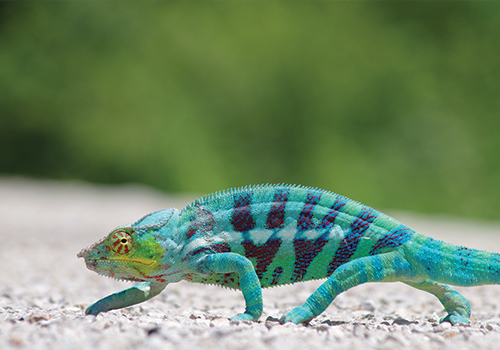
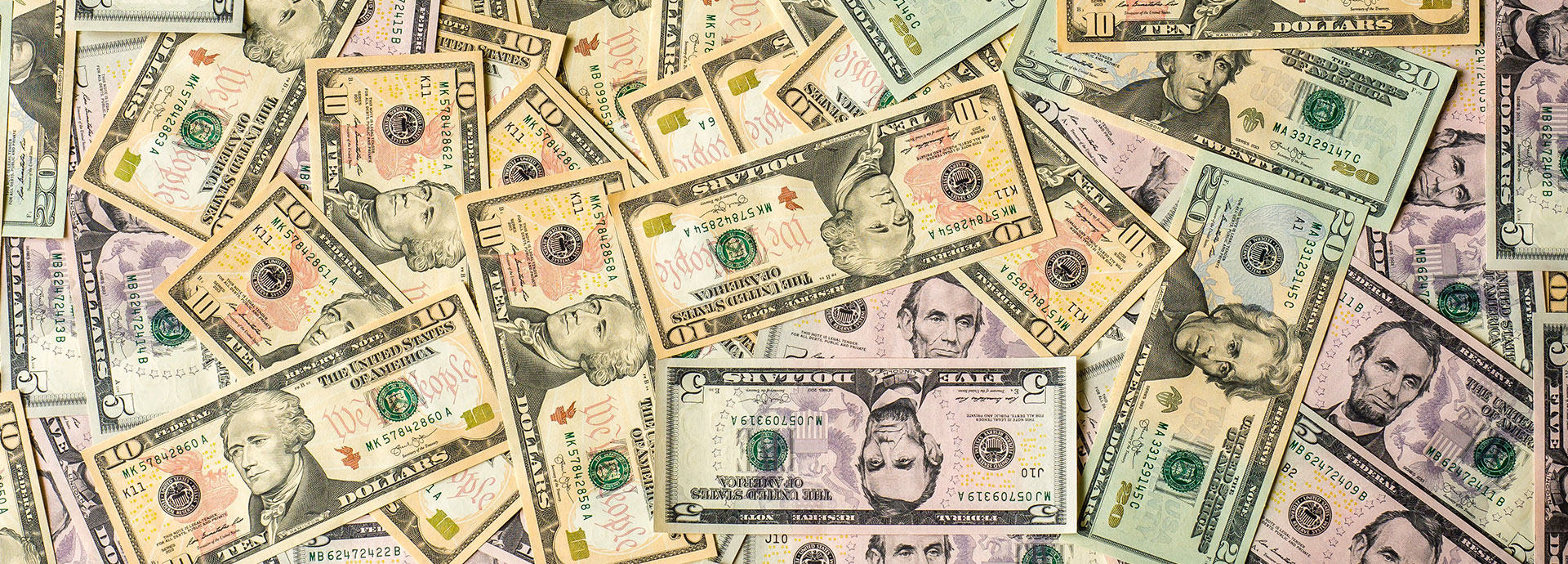
POWER, TECH & PHOTOGRAPHY
POWER
There are basically two main voltage systems used around the world: 110 Volt ‐ USA, Canada, Spain & Japan 220 Volt ‐ the rest of the world. In simple terms, the power supply available at the socket is roughly twice as powerful in 240V countries as in 110V countries.
The voltage in Madagascar is 220 Volts, therefore if you wish to use any electronic devices from Canada, the US or Japan you’ll need a voltage converter AND a plug adapter. Australia operates a 220V currency and therefore you only require an adapter for Australian appliances.
The adaptor you will need for Madagascar is a TYPE C or E or, alternatively you may prefer to invest in an International Travel Adaptor that provides you with more than one option.
Many adaptors also have a USB port so you can plug your smart phone, or I‐product directly into the adaptor.
For the latest & most up to date information about voltage and what adaptors to travel with refer to: www.korjo.com
ADAPTORS
Madagascar uses a 220V electrical current and a types C and E socket (European 2 round pin)

SMART PHONES & DATA
Smart phones can be wonderful travel companions. Not only will they help you stay in touch with friends and family, they’ll guide you through unfamiliar cities, enlighten you on local attractions, translate foreign languages and produce great photographs.
Left unchecked they can also wreak havoc with your travel budget!
The reason is that some (but not all) of the fun and useful functions smart phones perform require the downloading of data via an internet connection. Unfortunately, if you’re paying for data roaming it can be an expensive exercise and you run the risk of returning home to an expensive shock.
If you want to make the most of your mobile device, while avoiding unexpected and unpleasant charges, keep in mind the following tips:
- Buy an International Roaming Pack ‐ think about buying a pack from your phone network before departure in order to access cheaper rates
- Remove your regular SIM and replace it with a pre‐paid SIM either purchased before departure or upon arrival. Not only will you benefit from better prices for data, voice calls and SMS, but there will be a pre‐set limit on how much you can spend giving you some piece of mind.
- Turn off global roaming ‐ the problem with data roaming is not simply the exorbitant costs travellers are charged for downloading megabytes, it’s the fact that this data is often being sucked down without you even being aware of it.
To be safe, the easiest thing to do is simply disable data roaming.
We do NOT recommend taking advantage of free-wifi in public places such as airports and malls. The connection is often insecure, and you could run the risk of data & information theft. If you do need to go online, whether to check your emails, use a handy app or make an online booking – your best option is to find SECURE free or affordable Wi‐Fi.
WILL MY PHONE WORK IN MADAGASCAR?
There is some cellular coverage. Turn on international roaming if you want to be reached whenever you are in Madagascar’s big cities (but beware of roaming costs).
In Madagascar communication by phone is expensive and the clarity of the telephone lines is worse than in other countries. It is possible to call abroad from any public phone using a phone card from a Telma office (Telecom Malagasy). Some cities, small towns and even small islands like Tsarabanjina, are covered by the local mobile phone network. There are two mobile phone operators in Madagascar: Orange (dial 032) & Celtel (dial 033).
PHOTOGRAPHY
Photography plays an important role in any holiday. Zoom lenses are a great asset as are wide-angle lenses for landscape shots. The best over-all lens to take would be a zoom in the 70mm-300mm range. Only if you are a keen birder, would you need a lens greater than 300mm. For digital cameras it is suggested that you bring two rechargeable batteries and ensure that you have adequate memory space. As power is unreliable in many rural areas you may wish to invest in a power source that can be charged using solar energy. These are generally not inexpensive, but if you are a keen photographer they are worth the investment.
Please respect local customs and feelings when taking photos. You may need to tip locals in order to take photos. It is forbidden to photograph certain places such as airports, dams, bridges, government buildings & military installations.
If in doubt, ask!

RECOMMENDED READING LIST
Muddling through Madagascar ‐ Dervla Murphy
In Search of the Red Slave: Shipwreck & Captivity in Madagascar ‐ Mike Parker Pearson & Karen Godden
Ghost of Chance ‐ novella by William S. Burroughs.
The Madagaskar Plan ‐ Guy Saville
The Aye‐Aye and I ‐ Gerald Durrell
The Pirate’s Son ‐ Geraldine McCaughrean
The Tyrant Queen of Madagascar ‐ R.M. Ballantyne
Dancing with the Dead Journey through Zanzibar and Madagascar ‐ Helena Drysdale
Over the Lip of the World ‐ Among the Storytellers of Madagascar ‐ Colleen J. McElroy
Primal Instinct ‐ Edward J. Begen
Kings With Spears ‐ Alison Jolly
The Eighth Continent Life, Death, and Discovery in the Lost World of Madagascar ‐ Peter Tyson
Around Madagascar on My Kayak ‐ Riaan Manser
Taboo : A Study of Malagasy Customs and Beliefs ‐ Jørgen Ruud
Antipode Seasons with the Extraordinary Wildlife & Culture of Madagascar ‐ Heather E. Heying
The King of Pirates – Daniel Defoe
‘Gone with the Wind’ in Madagascar: A Cruise to an Indian Ocean Paradise ‐ Avril Sellars
Madagascar: Island of The Ancestors ‐ John Mack
Madagascar Travels ‐ Christina Dodwell
The Ravenala ‐ a romantic novel by Jackie Zollo Brooks
Thank You, Madagascar : Conservation Diaries of Alison Jolly ‐ Alison Jolly
GUIDEBOOKS:
Field guide to Birds of the Indian Ocean Islands – Sinclair & Langrand
Guide to the Birds of Madagascar – Olivier Langrand
Birds of Madagascar – A photographic guide by Morris & Hawkins
Mammals of Madagascar – Garbutt, N
Guide to Madagascar (9th ed) – Hilary Bradt
Madagascar Wildlife A visitor’s guide – Hilary Bradt et al




